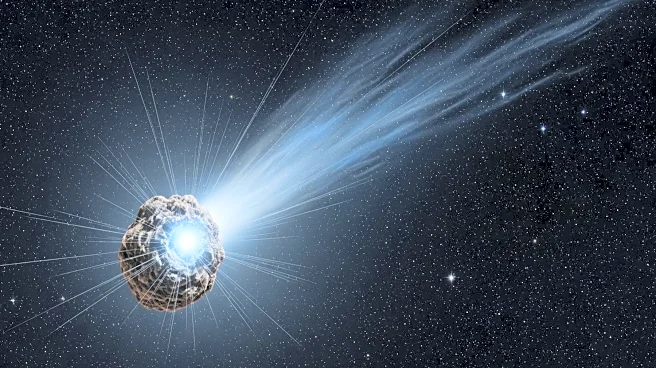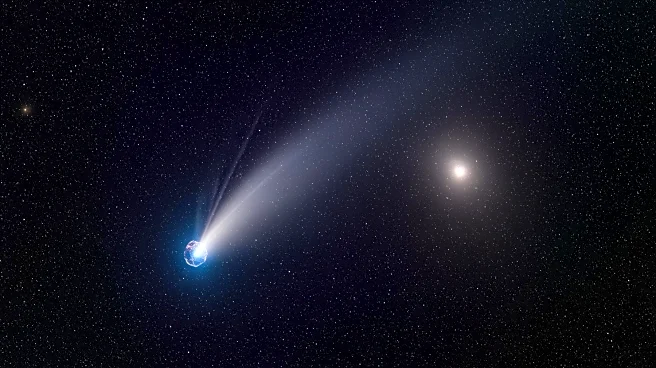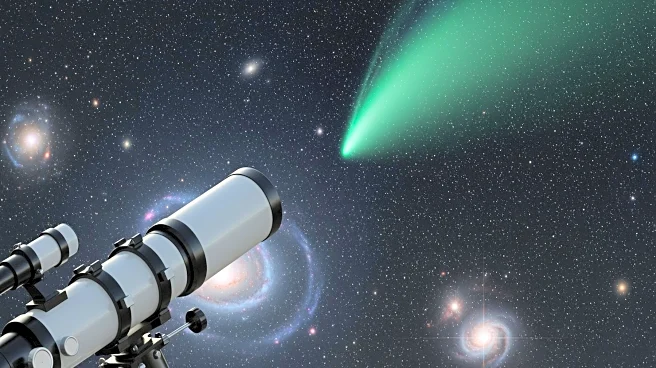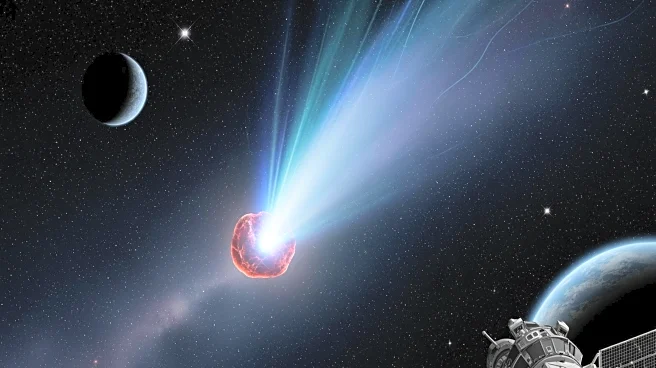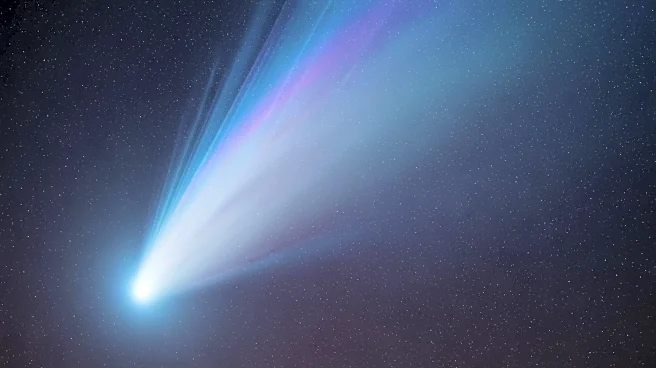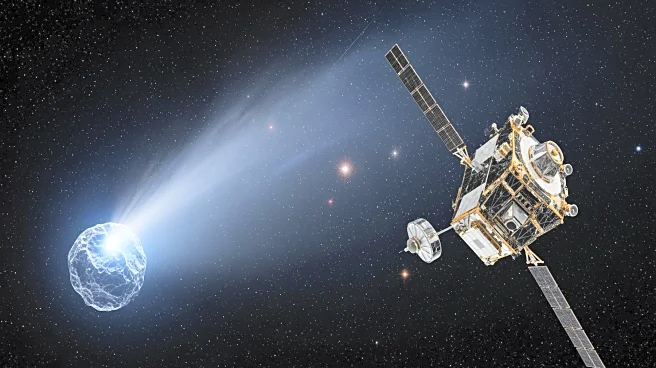What's Happening?
On November 8, 2025, astronomers M. Jäger, G. Rhemann, and E. Prosperi observed the interstellar comet 3I/ATLAS, revealing a complex jet structure. The observations were made at 4.10 Universal Time, with
the comet positioned 29 degrees from the Sun in the sky. The stacked RGB images, consisting of 24 exposures in the green filter, 2 in the red filter, and 2 in the blue filter, depicted a large coma extending up to half a million kilometers. The images showed at least seven distinct jets, including anti-tails directed sunward. The observations were conducted under challenging conditions, with the comet situated 7-10 degrees above the horizon and twilight interfering due to bright moonlight.
Why It's Important?
The observation of 3I/ATLAS's complex jet structure provides valuable insights into the behavior and characteristics of interstellar objects. Such findings can enhance understanding of cometary physics and the processes governing non-gravitational accelerations. This knowledge is crucial for astronomers and astrophysicists as they study the dynamics of celestial bodies and their interactions with solar radiation. The discovery of multiple jets and anti-tails could lead to new theories about the formation and evolution of comets, potentially impacting future research and exploration missions.
What's Next?
Further observations and analyses are expected to continue as astronomers aim to gather more data on 3I/ATLAS. The findings may prompt additional studies into the comet's composition and trajectory, contributing to broader research on interstellar objects. Scientists may also explore the implications of these observations for understanding the solar system's formation and the potential for similar phenomena in other star systems. Collaborative efforts among international astronomical communities could be initiated to deepen the investigation into 3I/ATLAS and similar celestial bodies.
Beyond the Headlines
The observation of 3I/ATLAS's complex jet structure raises questions about the potential for interstellar objects to carry information or materials from other star systems. This could have implications for the search for extraterrestrial life and the study of cosmic phenomena. The comet's behavior might also influence discussions on the ethical considerations of space exploration and the preservation of celestial environments. As scientists delve deeper into these observations, they may uncover new dimensions of interstellar travel and the universe's interconnectedness.
